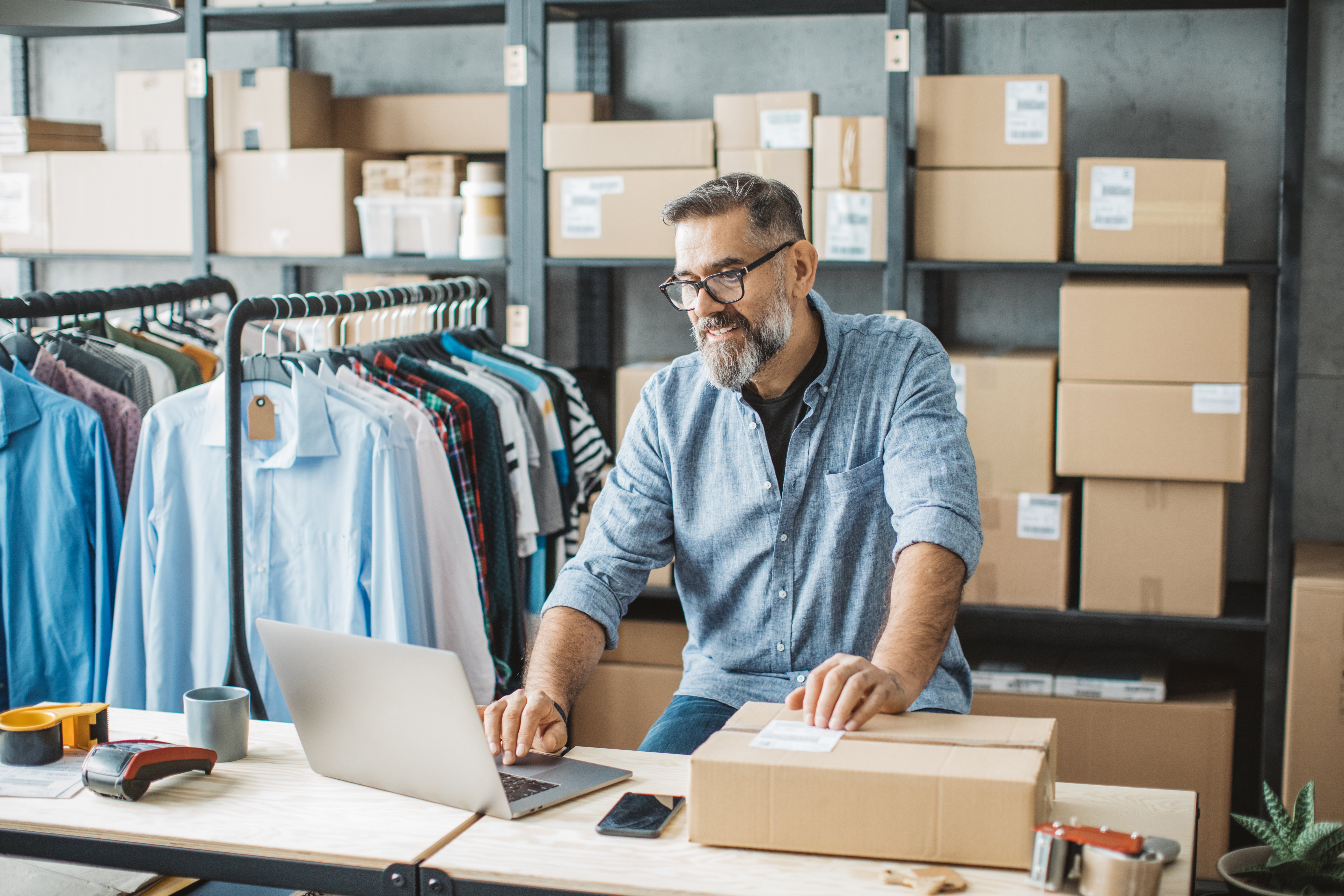What Is Online Fulfillment

If you’re a seasoned retailer, you probably miss the good old days of fulfillment. Remember when shopping was done physically in a store and fulfillment involved pulling items off a shelf or from a stock room? The brick-and-mortar fulfillment model is so simple and easy. But the e-commerce boom of 2020 put a wrench in that once simple retail order management process. E-commerce now accounts for a great percentage of sales and customers expect multiple shipping and delivery options.
Therefore, I thought it might be helpful to explain what is online fulfillment and discuss the various fulfillment options that are being utilized today and why it is a complex process.
What Is Online Fulfillment?
Online fulfillment is also known as e-commerce fulfillment and it is the process of picking, packing and shipping an order that originated online.
One might say online fulfillment evolved from the catalogue order fulfillment model (some of us may still remember the Sears Catalogue that graced our mailboxes in the 1990s), where a shopper browsed products “remotely” from the store catalogue, made a shopping list and placed an order over the phone or by mail. Once the order was finalized, it made its way to a distribution center to be picked, packed and shipped to the customer.
Today, we’ve moved on from mail-in sheets and call centers to online stores and e-commerce carts. Although for some retailers, the final stage of the catalogue order fulfillment model is the same process used in their online fulfillment process. For other retailers, they have grown and progressed their online fulfillment model in multiple ways, from how an order is routed to a fulfillment site, the type of fulfillment site, the type of picking and packing, and the location from where an order is shipped (which might not necessarily be where it was fulfilled).
Suffice it to say, what is online fulfillment today is a more complex, sophisticated model with multiple modes of fulfillment available for e-commerce. To help you gain an easy grasp of all the online fulfillment options available today, we’ve put together the following list.
Online Fulfillment Options
-
Distribution Center (DC) Fulfillment
The original online fulfillment process. An order is sent to a DC to be fulfilled and shipped to the customer. Here’s a modern twist … instead of shipping directly to the customer, the order can be shipped to a store for consolidation with other items or for click-and-collect (see ship-to-store).
-
Ship-to-store
An order is fulfilled at the DC, but sent to a store (by courier or as part of a regular replenishment run) for click-and-collect, consolidation or to be shipped to the customer (see ship-from-store).
-
Ship-from-store
An order is fulfilled in the store and shipped from the store (see store fulfillment), or fulfilled in the DC, sent to the store and shipped from the store (see ship-to-store).
-
Click-and-collect
Also known as BOPIS (buy online, pick up in-store), an order is sent to a predetermined location (a store) to be picked up by the customer.
-
Store Fulfillment
An online order is routed to a store that carries the items and it’s a store associate using store inventory to fulfill the order. The order is usually shipped from the store or picked up by the customer (see click-and-collect).
-
Drop-Shipping
The order is routed to a wholesaler or manufacturer of the product and shipped to the customer by the drop-shipper.
-
Third-party Logistic (3PL) Fulfillment
The order is routed to a 3PL company to be fulfilled and shipped to the customer.
-
Ship-to-locker
The order is fulfilled at one of the locations mentioned above, but sent to a storage locker to be picked up by the customer.
-
Micro-fulfillment
The order is sent to one of many small, automated warehouses to be picked, packed and shipped by automation.
Why Online Fulfillment Is Complex
The sheer number of variations of online fulfillment can make even the most seasoned of supply chain professional’s head spin. So why are there so many options? The answer lies at the intersect of customer wants and retailer needs.
Customers want speed, flexibility and options — retailers need to control costs and remain profitable. In order to provide customers with choices while keeping orders as profitable as they can be, retailers can pick and choose the model(s) that work best for them. This usually means shortening the last mile and leveraging existing fulfillment processes.
But online fulfillment is just not for omnichannel retailers anymore. Direct-to-consumer (DTC) retailers also need online fulfillment and business-to-business (B2B) distributors are also starting to build this model into their supply chains. While the whole “store” aspect of online fulfillment may not apply in most cases (there are of course B2B distributors with retail locations and DTCs leveraging retail partnerships), concepts like micro-fulfillment can enable distributors and B2Bs to get closer to their customers and reduce last mile costs.
In Summary
While shipping “the old-fashioned way” directly from a DC may feel warm and secure, much like a thick fleece sweater from the 1992 Fall Sears Catalogue, a number of factors like the cost of shipping, the cost of fulfillment, customer preferences and sustainability are forcing supply chains to be more adaptive and resilient.




